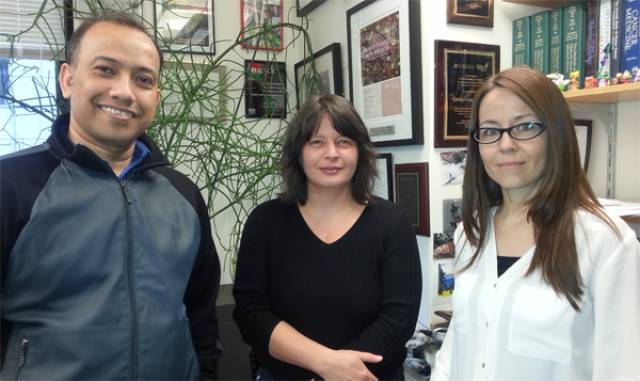It was hypothesized that the preventive effects of parity on the development of cancer may be due to alterations in the number or properties of mammary epithelial stem cells. Such changes would reduce the susceptibility of stem cells to oncogenesis. In the present study researchers have analyzed the relative frequency and molecular profiles of four types of cells (luminal and myoepithelial cells, lineage-negative (lin-) cells with progenitor features, and stromal fibroblasts) isolated from nulliparous and parous premenopausal women normal breast tissue. In women who had children there was a reduction in the activity of many genes and pathways involved in the development, differentiation and cell cycle regulation, effects that may contribute to the reduced risk of breast cancer.
The researchers also identified a cells subpopulation characterized by expressing high levels of p27 (CD44+ p27+) that decreased drastically with pregnancy. This subpopulation did not decrease in tissue from women carrying the BRCA1/BRCA2 mutation, which increases the risk of breast cancer. This suggests that the levels of these cells are associated with the risk of developing breast cancer. They analyzed the pathways controlling the frequency of this cell type, and found that inhibition of certain molecular pathways can reduce the presence of p27+ cells.
These results may have a large impact on the design of preventive measures, as it offers information on the cells which may cause breast cancer and demonstrated that some proteins could reduce this cell population very significantly. It opens a totally innovative way for the development of preventive and treatment strategies decreasing p27+ cells in breast epithelium. It will be necessary to analyze large cohorts of women with well known risk factors and long-term monitoring them to conclusively determine the relationship between the number of p27+cells, the activity of signaling pathways related to parity and breast cancer risk.
Reference:
Sibgat Choudhury, Vanessa Almendro, et al. Molecular Profiling of Human Mammary Gland Links Breast Cancer Risk to a p27+ Cell Population with Progenitor Characteristics. Cell Stem Cell 13, 1–14. Ahead of print.


